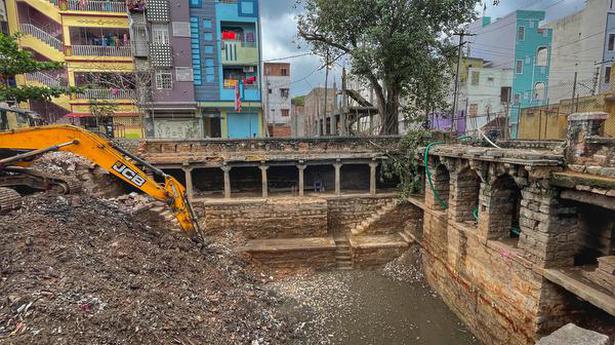MoreBack to News Headlines
Bansilalpet stepwell on path of resurrection
The Hindu
This well, one of the sources of water for Gandhi Hospital, is being restored by GHMC
Perhaps after decades, the carved idol inside a grotto of the Bansilalpet stepwell was worshipped on Friday. The carving of Ganesh and that of Hanuman have been exposed as the well is being restored by the Greater Hyderabad Municipal Corporation (GHMC) in tandem with The Rainwater Project. The stepwell in Bansilalpet was one of the sources of water for Gandhi Hospital. “The well went into disuse in the early 80s after a few people committed suicide. When we began restoration, there was a talk about filling it up and turn it into a parking lot. That’s when we stepped in,” says Kalpana Ramesh, who is part of the restoration effort. “We have carted out nearly 500 tonnes of debris from it. According to the residents, this is 60 feet deep and we have reached only 35 feet,” said a GHMC worker supervising the clean up.More Related News





















 Run 3 Space | Play Space Running Game
Run 3 Space | Play Space Running Game Traffic Jam 3D | Online Racing Game
Traffic Jam 3D | Online Racing Game Duck Hunt | Play Old Classic Game
Duck Hunt | Play Old Classic Game











